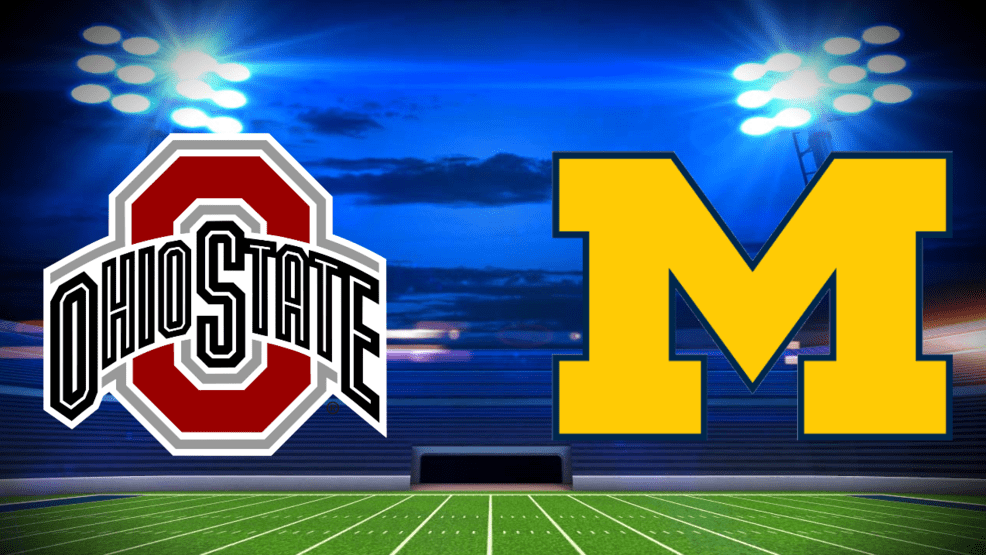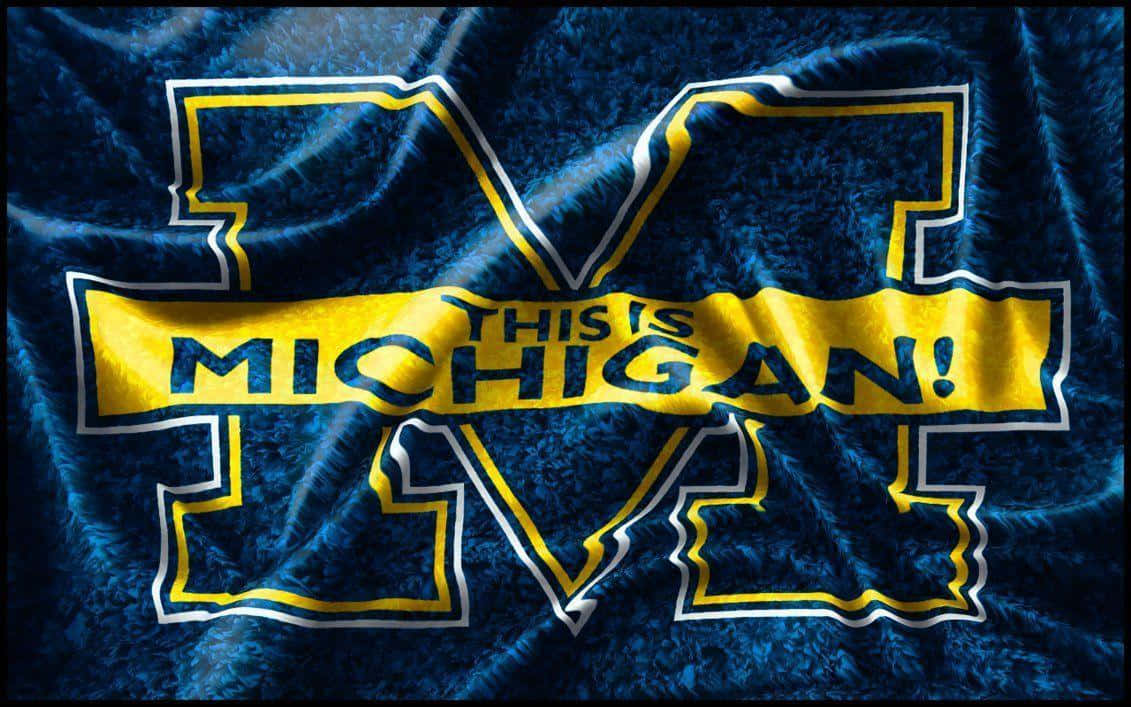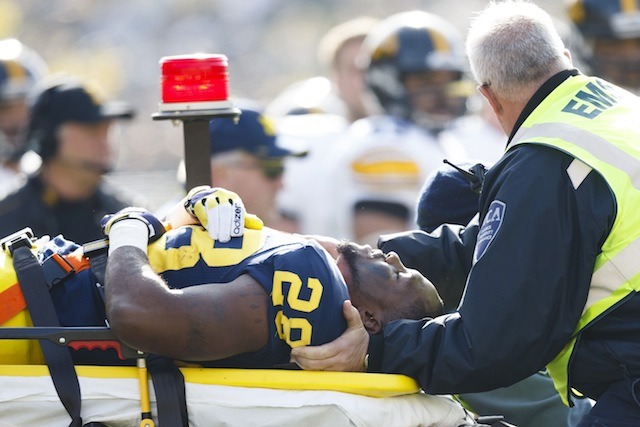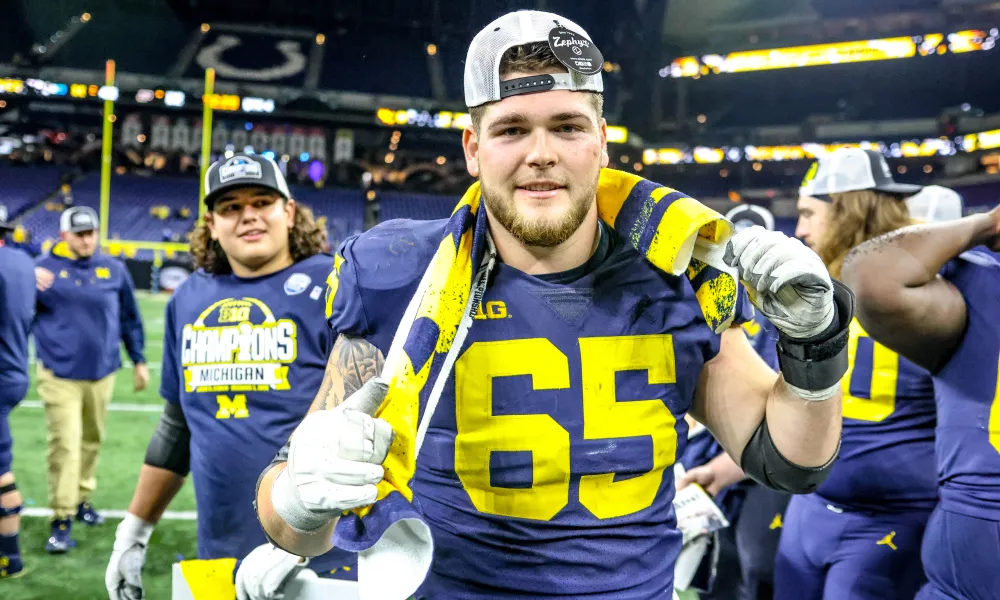Has the Michigan-Ohio State rivalry gotten out of hand? Why Jim Harbaugh may have a point
ANN ARBOR, Mich. – Feeling nostalgic, purists have pointed out that the Michigan-Ohio State match this year may have been the final one of its sort.

Stretching back to the 1970s, no rivalry in college football has been played with more at stake. This game determines legacies, alters coaching careers and, more often than not, decides the Big Ten race. This season, the stars aligned for one of the biggest Michigan-Ohio State games ever played, a 30-24 Michigan victory that put the Wolverines on track for a third consecutive trip to the College Football Playoff and left Ohio State on the outside looking in.
With the Big Ten scrapping its divisions and expanding to 18 teams next season, a Michigan-Ohio State rematch in the conference championship game could become a reality. The new 12-team College Football Playoff will have room for both teams, making the regular-season matchup less decisive. In that new world, it’s hard to imagine a Michigan-Ohio State game mattering as much as this one did.
Are we sure that’s such a bad thing?
GO DEEPER
Meek: Michigan gets final word against Ohio State in what may be the end of an era
Michigan coach Jim Harbaugh was asked Monday about the furor surrounding the rivalry and said, in essence, he thinks it’s gotten out of hand. The problem isn’t the rivalry itself, Harbaugh said, but everything around it: the hype, the vitriol, the media attention and the unending pressure.
“I think that is very manufactured for the TV show that people want to watch and see,” Harbaugh said. “It’s not healthy for the student-athletes on either side when you’re trying to put that much (pressure) and somebody’s practically thinking it’s life or death.”
This year’s game was particularly fraught, in no small part because Harbaugh had to watch it at home on his couch. A buildup of hostilities between the two programs, magnified by a relentless media spotlight, came to a head when Harbaugh was suspended three games by the Big Ten for Michigan’s scouting and sign-stealing scandal.
There’s no need to rehash the drama that surrounded both programs leading up to the game. It should be obvious to anyone who has spent even a few minutes perusing the message boards or the comment sections. This season was a perfect storm of ridiculously high stakes, incendiary storylines and moral indignation on both sides. It’s hard to tell fans to keep the game in perspective when the daily existence of each program revolves around beating the other.
Michigan and Ohio State battle each other 365 days a year and aren’t afraid to admit it. When a rivalry is that all-consuming, anything that happens at either school becomes fodder for the feud. The mutual obsession leaves little room for de-escalation, only constant gamesmanship.
No coach or player from either side would dream of showing up at Big Ten media days and saying, “This year I plan to take the rivalry a bit less seriously.” Harbaugh said the opposite back in 2021 when he vowed to win the Big Ten or die trying. Although I believe he was speaking figuratively, his players understood what he was saying. A major theme that season was Michigan’s renewed emphasis on Ohio State, illustrated by the “Beat Ohio” drill and other daily reminders. It paid off with Michigan’s first victory against Ohio State since 2011.
Love him or hate him, Urban Meyer was maniacal in preparing the Buckeyes to beat Michigan. He pushed Harbaugh to the brink, and now Harbaugh has done the same to Ohio State coach Ryan Day. The look on Day’s face after a third consecutive loss to Michigan showed the toll this rivalry takes on the losing program.
Coaches get paid a lot of money to deal with that pressure. The players do not. The reality is that NFL players make millions of dollars to perform in games that mean less to their fans than Saturday’s game meant to fans of Michigan and Ohio State.
While name, image, and likeness deals can be profitable for players, they do not provide the same financial stability as an NFL contract guarantee. When Michigan offensive lineman Zak Zinter was carted off the field with a broken leg, it was a brutal reminder of the risks players take to sustain these rivalries.
It was no coincidence that Harbaugh used his next media availability to repeat his call for revenue sharing with players. He watched the game at home and sat through the interminable commercial breaks like everyone else. The game pulled in massive viewership, in no small part because of the drama and intrigue surrounding the rivalry.
“A lot of that seems very built up from outside of the two programs,” Harbaugh said. “I’m not going to go as far as to say ‘contrived,’ but it is hyped up to no ends.”
Ohio State has lost three in a row to Michigan after eight straight wins. (Adam Cairns / USA Today)
To put things in perspective, the Ohio State game is typically considered the more civil and respectful of Michigan’s two main rivalries. The Michigan State rivalry is supposed to be the nasty one, and it certainly lived down to that reputation in recent years. A recurring theme is that the rivalry stokes controversy whenever something contentious occurs, such as the sign-stealing scandal or the Michigan State incident in the stadium tunnel last year.
Media coverage is part of that, no doubt. In the days of Bo Schembechler and Woody Hayes, scandals were covered in the morning newspaper and the evening news. Now they play out minute by minute on social media, with each update drawing fans deeper into the drama.
GO DEEPER
Michigan-Ohio State final thoughts: Zak Zinter’s injury, Sherrone Moore’s playbook and more
Some players, like Michigan quarterback J.J. McCarthy, avoided social media altogether. A few others probably took a peek. It’s hard to believe any player on either team could have been unaware of anger building on both sides.
Both teams have contributed to that through the years. Although it is probably not in the top 500 comments made about Day, Harbaugh’s remark about “standing on third base” following Michigan’s 2021 victory was not exactly polite. Day’s apocryphal comment about hanging 100 points on Michigan didn’t help the tone of rivalry, either.
Neither coach had much to say last week when they were asked about the level of respect between the two coaching staffs. Nobody needs a bunch of empty platitudes, but players on each side at least acknowledged their respect for the players who wear the other uniform.
The Game itself is still very good, despite all the commotion and drama surrounding the rivalry. Both the millions of fans who watched the game on TV at home and one particular TV watcher will always remember the 110,000 fans who came on Saturday.
“I understand the attention,” Harbaugh said. “Me not being there was a big deal. I want to spend my time recognizing what was actually accomplished a couple days ago by our team. Maybe they will get the credit that they’re due.”
GO DEEPER
Michigan-Ohio State final thoughts: Zak Zinter’s injury, Sherrone Moore’s playbook and more
Michigan players have had a lot thrown at them the past month. Too much, perhaps. To withstand all of that and win one of the biggest games in the program’s history was an impressive feat.
The stakes of Saturday’s game were part of what made it special, and traditionalists are right to worry that the matchup will lose some of its luster next year. Saturday’s win wouldn’t feel nearly as momentous if the Wolverines were preparing for a rematch against Ohio State instead of a date with Iowa in the conference championship game.
I doubt Day or anybody at Ohio State would find solace in thinking about the expanded CFP or the end of the Big Ten East. No matter what’s at stake, the rivalry is always going to matter. Starting next season, The Game might feel a little more like a game and less like a life-or-death affair.
Maybe that’s not such a bad thing.



